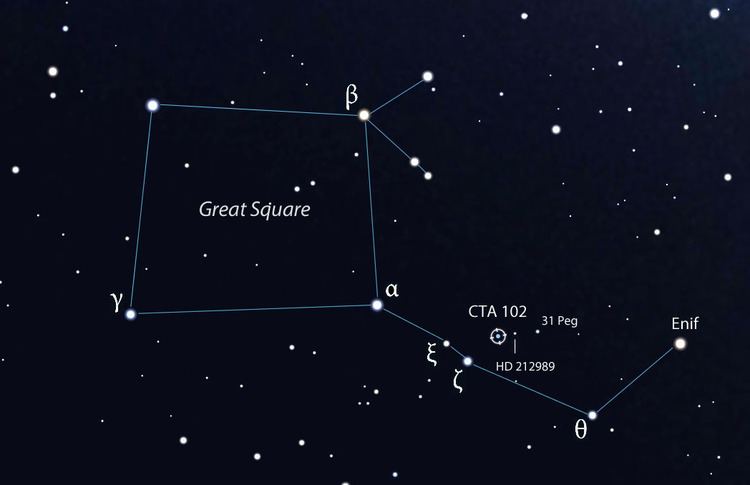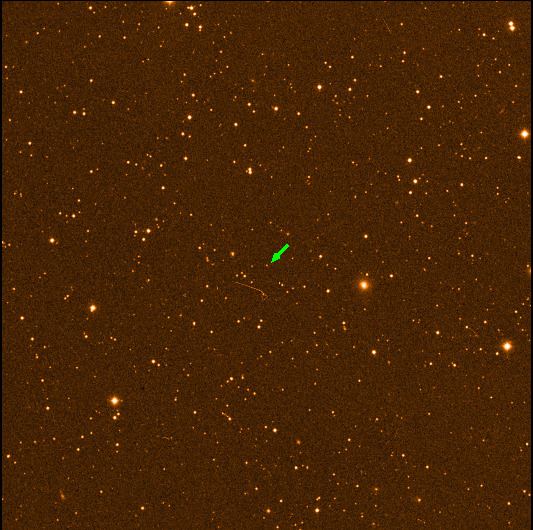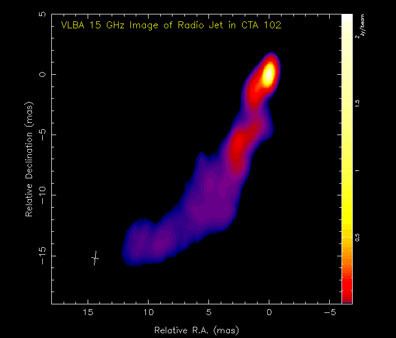Declination +11° 43′ 51s″ | Right ascension 22 32 36.4 Redshift 1.037 | |
 | ||
The byrds cta 102 mono 67
In astronomy, CTA 102, also known by its B1950 coordinates as 2230+114 (QSR B2230+114) and its J2000 coordinates as J2232+1143 (QSO J2232+1143), is a quasar discovered in the early 1960s by a radio survey carried out by the California Institute of Technology. It has been observed by a large range of instruments since its discovery, including WMAP, EGRET, GALEX, VSOP and Parkes, and has been regularly imaged by the Very Long Baseline Array since 1995. It has also been detected in gamma rays, and a gamma-ray flare has been detected from it.

In 1963 Nikolai Kardashev proposed that the then-unidentified radio source could be evidence of a Type II or III extraterrestrial civilization on the Kardashev scale. Follow-up observations were announced in 1965 by Gennady Sholomitskii, who found that the object's radio emission was varying; a public announcement of these results on April 12, 1965, caused a worldwide sensation. The idea that the emission was caused by a civilization was rejected when the radio source was later identified as one of the many varieties of a quasar.

CTA 102 is one of the two great false alarms in the history of SETI, the other being the discovery of pulsars, specifically PSR B1919+21, which are rotating neutron stars.

The American folk rock band The Byrds whimsically reflected the original view that CTA-102 was a sign of extraterrestrial intelligence in their song "C.T.A.-102" from their 1967 album Younger Than Yesterday.

In late 2016 CTA 102, usually glowing around magnitude +17, had a bright outburst in visible light to magnitude +11 (~250 times brighter than usual).
